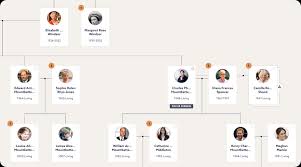Discovering Your Roots: How to Find My Family Tree
Exploring Your Roots: How to Find Your Family Tree
Embarking on a journey to discover your family tree can be a rewarding and enlightening experience. Whether you are just starting out or have been researching for years, uncovering the branches of your family’s history can provide valuable insights into your own identity and heritage.
Here are some steps to help you find your family tree:
- Gather Information: Start by collecting as much information as possible from your relatives. Record names, dates, locations, and any stories or anecdotes they may have about your ancestors.
- Utilize Online Resources: Websites like Ancestry.com, FamilySearch.org, and MyHeritage.com offer vast databases of records that can help you trace your lineage. Create an account and start building your family tree online.
- Visit Local Archives: Local libraries, historical societies, and archives often hold valuable records such as birth certificates, marriage licenses, and census data. Visit these institutions to access primary sources for your research.
- Join Genealogy Groups: Connecting with other genealogists can provide support, guidance, and access to additional resources. Join local genealogy societies or online forums to collaborate with others who share your passion for family history.
- Organize Your Findings: As you uncover new information about your ancestors, make sure to keep detailed records and organize them in a systematic way. This will help you track your progress and avoid duplicating research efforts.
Remember that building your family tree is a journey that requires patience, persistence, and a willingness to explore new avenues of research. By delving into the past and connecting with your roots, you can gain a deeper appreciation for the generations that came before you and create a lasting legacy for future generations.
Happy exploring!
5 Essential Tips for Tracing Your Family Tree and Uncovering Your Ancestry
- Start by talking to your relatives to gather information about your family history.
- Use online genealogy websites and databases to research and build your family tree.
- Visit local libraries, archives, and historical societies for additional records and resources.
- Consider taking a DNA test to uncover more about your ancestry and potential relatives.
- Document your findings carefully and organize them in a systematic way for easy reference.
Start by talking to your relatives to gather information about your family history.
To begin your journey in tracing your family tree, a crucial first step is to engage with your relatives and tap into their wealth of knowledge about your family history. By initiating conversations and actively listening to their stories, you can gather valuable information such as names, dates, locations, and personal anecdotes that may serve as vital clues in unraveling the branches of your lineage. Building a strong foundation of familial insights from those closest to you can set the stage for a rewarding exploration into your ancestry and provide a meaningful connection to your roots.
Use online genealogy websites and databases to research and build your family tree.
Utilizing online genealogy websites and databases is a valuable tip for anyone looking to research and construct their family tree. Platforms like Ancestry.com, FamilySearch.org, and MyHeritage.com offer a vast array of records and resources that can help you trace your lineage, discover new branches of your family tree, and connect with distant relatives. By creating an account on these websites and exploring their databases, you can access vital information such as birth records, marriage certificates, census data, and more, making the process of uncovering your family history both efficient and comprehensive. Online genealogy tools provide an accessible gateway to the past, enabling you to piece together the puzzle of your ancestry with ease and precision.
Visit local libraries, archives, and historical societies for additional records and resources.
Visiting local libraries, archives, and historical societies can be a valuable step in uncovering additional records and resources to build your family tree. These institutions often house a wealth of primary sources such as birth certificates, marriage records, land deeds, and census data that may not be readily available online. By exploring these local repositories, you can access unique information that can provide new insights into your ancestors’ lives and help you piece together the puzzle of your family history.
Consider taking a DNA test to uncover more about your ancestry and potential relatives.
Consider taking a DNA test to uncover more about your ancestry and potential relatives. DNA testing can provide valuable insights into your genetic heritage, helping you discover connections to distant relatives and uncovering hidden branches of your family tree. By analyzing your DNA results, you may be able to confirm existing family relationships, identify new relatives, and even uncover ancestral origins that were previously unknown. Embracing the power of DNA testing can enhance your genealogical research and provide a deeper understanding of your unique family history.
Document your findings carefully and organize them in a systematic way for easy reference.
Documenting your findings carefully and organizing them in a systematic manner is crucial when tracing your family tree. By keeping detailed records of names, dates, locations, and any other relevant information, you can create a comprehensive archive that will not only help you track your progress but also make it easier to reference and cross-check your research. Establishing a structured system for storing and categorizing your findings will save you time and effort in the long run, ensuring that you can easily navigate through the branches of your family history with clarity and precision.

